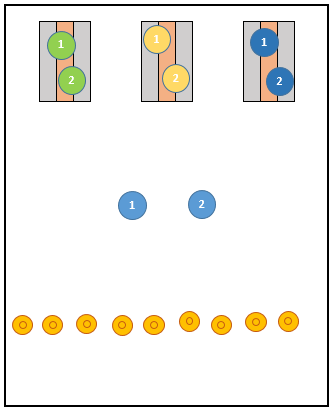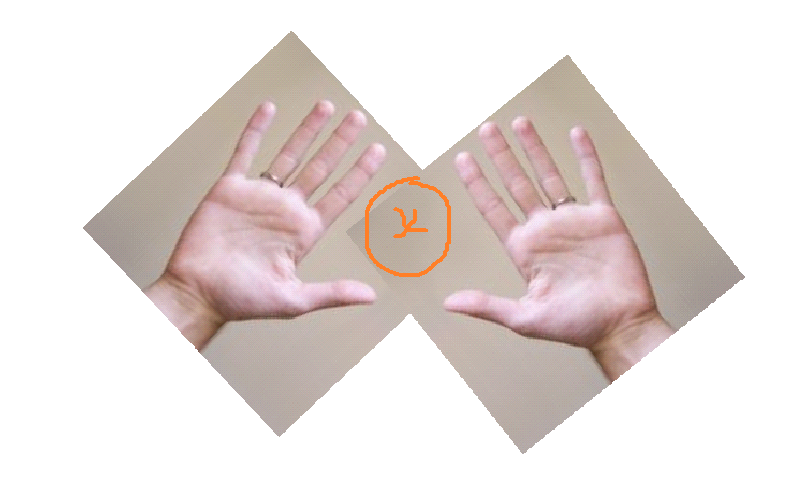Volleyball drills
- It’s fair to say that volleyball is a very fast game.
- That means that a volleyball player should be able to move quickly to do great job on the court.
- Volleyball players should focus on increasing foot speed as well as core rotational speed.
- Now, it’s time for you to get familiar with some of the best volleyball exercises for explosive speed.
- Volleyball players should do high knee skips for a number of reasons.
- It’s important to know that doing this type of exercise has a positive impact on a volleyball player’s calves, hamstrings and hip flexors.
- If you do this type of exercise regularly then you will be able to improve your vertical jump, endurance and coordination over time.
- Oftentimes, a volleyball player needs to jump off one leg during the game.
- It’s worth noting that this type of jumping is done by both attackers and defensive volleyball players.
- That’s the reason why athletes should do single leg bound exercise regularly.
- Actually, this volleyball exercise has many great benefits.
- First and foremost, doing single leg bound helps volleyball players succeed in jumping off one leg.
- On the other hand, this exercise helps a volleyball player gain the confidence that he/she needs to do this type of jumping.
- The exercise also positively affects a volleyball player’s hip as well as hip flexor and quads.
- It’s crucial for volleyball players to do single leg bound exercise the right way.
- When jumping off one leg you should try to keep your opposite knee up as high as it’s possible.
- Doing squat jumps helps volleyball players strengthen calves, glutes, hips as well as quads.
- When squatting down volleyball players should try to keep hips parallel.
- Make sure that your knees are bent at 90 degrees.
- Doing tuck jump has a profound positive impact on a volleyball player’s glutes, hips and quads.
- When doing this type of volleyball exercise you should keep your knees as high as possible.
- Plus, you need to spend as little time on the ground.
- Frog hops is the right type of volleyball exercise for developing explosive jumping power.
- If you do this volleyball exercise on a regular basis you’ll be able to strengthen the quadriceps and hamstrings over the time.
- As a result, you’ll be able to jump higher!
- Split jump lunge is the volleyball exercise that offers a great way of strengthening glutes, quads and hips.
- So, this exercise will have a huge positive impact on your vertical jump.
- It’s worth noting that this exercise requires some balance as well as a lot of strength from a lower body.
- It’s very important for you to take the right position before starting a split jump lunge.
- You should keep your knee directly over your foot.
- On the other hand, your knee shouldn’t go over your toe.
- Then, you need to drop down into the lunge.
- Now, it’s time for you to push both your feet simultaneously and switch legs.
- Lastly, you should gently land on the floor keeping your feet wide.
- You should also raise the opposite arm of your front leg while landing.
Divide "field" in 4 boxes. Exercise can be done with 2 persons at the same time, in which every player controls someone. The ball has to be played overarm, playing the ball high, and get to the other side like this. ;
- Divide the field in 4 boxes, playing the ball in every box at least 3 times.
- Every player gets 2 turns, in which the best turn counts.
- How far are you going to get
Directions for post holders
- Play up at least 3x per box: otherwise you cannot proceed to the next box
- The turn is over, when:
- the ball drops on the ground
- the player has both feet outside the box (1 foot outside the box is allowed!).
- the ball is not played high enough above the head (pay close attention!)
- Play at least 50 cm above the head.
- Every new turn start in the first box.
- The lines are part of the box (with regard to foot fouls outside the boxes).
Divide children in pairs; 1 counter and 1 performing the exercise
- 4 hoops are in a square. The distance between the hoops is 5 meters. In every hoop is a ball. The player starts in a corner with a ball.
- Change as many balls as possible, in which the ball has to be put in the hoop. The player has to look the same direction the entire time.
- Every player has 1 turn.
- Count the number of ball changes in 45 seconds.
Directions for the counters
- The balls have to be put in the hoops. If the ball rolls out, the player has to go back to put the ball back in the hoop!
- All four hoops have to be processed in order. The player is not allowed to run between 2 hoops and change the balls!
A game of 1 against 1 on a six meter long field
- Basisoefening:
- Player A tries to score a point against player B
- Everything is allowed, the ball has to be touched at least 2x before playing.
- Variation 1:
- The ball being played is, from now on, a hard overarm contact.
- Variation 2:
- The second contact is a soccer contact (head, knee, shoulder, breast, foot).
- Variation 3:
- Build up has to be done in 3 times.
- Ball 1 = Underhand
- Ball 2 = overarm
- Ball 3 = Attack or tip
- Build up has to be done in 3 times.

Goal;
The teams on the mats have to conquer 4 cones without being tagged in x number of minutes
Requirements;
- Pairs on the 3 mats (to be expanded to 2 pairs)
- 2 taggers between mats and cones
- 9 cones around a field's length from the mats.
Game explanation;
The pair on the mat has conquer a mat hand in hand or otherwise connected.
The taggers are going to try to tag the pair.
If one of the pair is tagged, they have to go back to their mat and try again.
The first at the four cones has one. The team with the least cones are going to be the taggers.
Set a time limit for an x number of minutes to keep the flow in the game.
- You are in pairs bsp;
- The one has a tennis ball, and the other a cone.
- One is holding the cone in a triangle and tries to catch the tennis ball thrown by the other.
- The catcher then tries to push the ball to the thrower.
- You do this 10x and then change.
- Also pay attention to leg work
The hands are positioned like this:
- The circle is the cone.
- The point of the cone has to point to the nose of the kid.
- You need little cones.








